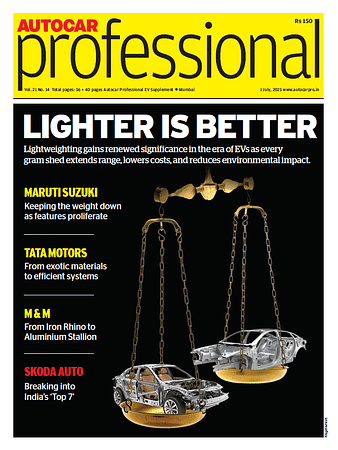ZF’s new seatbelt system with multi-stage load limiter enhances vehicle occupant safety
The core of the technology is the Multi-Stage Load Limiter, which adapts the restraining force of the belt to the stature and size of the occupants.
ZF has announced development of a new seatbelt system that helps further reduce the consequences of accidents. With its new seatbelt system, ZF Passive Safety Systems will enable significantly improved adaptation of the belt force limitation to the size and body weight of the vehicle occupants in the future.
The Multi-Stage Load Limiter (MSLL) is primarily responsible for the individual system adjustment. It helps to further reduce the consequences of accidents for all occupants and enables car manufacturers to meet the increased requirements of the NCAP Roadmap 2030.
The innovative approach of this technology lies not only in the individual control options of the component itself, but also in the extended possibilities for interaction with other safety systems. This turns the seatbelt with the MSLL switchable force limiter into an intelligent, flexibly controllable safety device.
Modern restraint systems already intervene in accidents at a very early stage. In the event of an unavoidable crash, the belt tightens around the body before the crash (pre-tensioning) to reduce belt slack and decelerate it in a controlled manner after the impact and finally transfer it forwards into the airbag. The systems are based on representative, standardized test subjects (dummies).
In future, the NCAP crash test will demand even better protection for individual vehicle occupants. "The demands on the adaptivity of safety systems are increasing – both in the expectations of end customers and in the NCAP test criteria. Our new belt system makes it easier for vehicle manufacturers to meet the increased requirements and specifically reduces the consequences of accidents by adapting even better to the occupant," says Rudolf Stark, Head of ZF's Passive Safety Technology Division.
In order to reduce the forces acting on the body in the event of an accident, many seat belt systems already have a two-stage controllable load limiter (SLL). This was an important step towards adaptivity. To provide even more flexibility, ZF now offers its belt tensioner with multiple switchable load limiter (MSLL). It has a multi-stage design and can vary the restraining forces even better over the entire course of the crash. The system makes it possible to respond individually to people of different stature and to control the belt forces appropriately.
Seatbelt system as an information provider
In the future, the path to more variability in belt forces will lead via the sensory recording of the interior in order to recognize even better which people are sitting where and which belt forces are to be applied individually in the event of a serious or minor collision. Various sources will be used for this: In addition to interior cameras, which, for example, detect when the driver operates the infotainment with their right hand or turns their head towards the rear occupants, the seatbelt system itself can provide valuable information.
This is because the sensors in the belt can measure the belt pullout length and thus allow conclusions to be drawn about body circumference and therefore stature and weight. In addition, there is the link to the active safety systems and their sensors outside the vehicle - from the camera to the radar. For the networked restraint system, for example, it is important to know from which direction an impact is coming. In this way, the MSLL can offer small and light persons better adapted individual protection in the event of moderate accidents (with impact speeds of up to 35 km/h). This applies, for example, to children in the rear seat. Older people, who have a higher risk of injury due to age dependent changed bone structure, can also benefit from this. In addition, the system also potentially improves occupant safety for heavy people in overload accidents (with impact speeds above 56 km/h).
RELATED ARTICLES
Skoda begins sale of made-in-India CKD Kushaq in Vietnam
Before production started, pre-series Kushaq vehicles covered over 330,000 kilometres on a variety of Vietnamese roads a...
Six Japanese companies join forces to expand use of recycled materials in new vehicles
Denso, Toray Industries, Nomura Research Institute, Honda Motor, Matec Inc and Rever Corporation have set up the BlueReb...
BYD selects Voestalpine as steel supplier for its Hungarian plant
The announcement of the Austrian steelmaker as a supplier demonstrates BYD’s strategic plan to source from high-quality,...





 By Autocar Professional Bureau
By Autocar Professional Bureau
 31 Jan 2024
31 Jan 2024
 6156 Views
6156 Views












